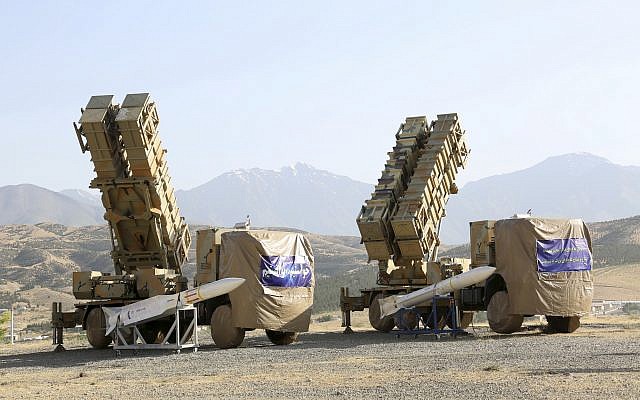By MICHEL MOUTOT
AFP — A cyber attack on Iranian missile systems claimed by the US last week would have had to exploit a flaw in the heavily-guarded network, experts said.
Citing US official sources, American media last week reported that the Army Cyber Command had crippled the Iranian Revolutionary Guard’s air defense units that shot down a sophisticated drone on June 20.
Military computing security is usually “hardened” to defend against attack but highly-skilled computer scientists in cyber units of modern armies are always working to find a way in.
“The simplest way would be for a special forces member to plug in a USB [carrying a virus] to the right place,” Loic Guezo of the French Information Security Club told AFP.
This is almost certainly how the well-known US-Israeli Stuxnet virus was introduced in 2010, into the computers of Iran’s nuclear complex, according to experts.
Iran at the time accused the US and Israel of using the virus to target its centrifuges used for uranium enrichment.
The Revolutionary Guards are believed to have since bolstered precautionary measures in a bid to isolate their military computer networks from the internet.
However, according to a military expert who requested anonymity, an “anti-aircraft defense system requires radars, control and command centers and ground-to-air missile sites to be inter-connected.”
Those components are connected by intranet networks that “at one time or another” must be connected to the internet.
“In the past, there was no way to connect to a weapon system,” said Guezo.
Today, however, he said most computer operating systems are commercial and vulnerable to attacks even if “everything is done to make them impenetrable.”
This photo released by the official website of the Iranian Defense Ministry on Sunday, June 9, 2019, shows the Khordad 15, a new surface-to-air missile battery at an undisclosed location in Iran. The system uses locally made missiles that resemble the HAWK missiles that the US once sold to the shah and later delivered to the Islamic Republic in the 1980s Iran-Contra scandal. (Iranian Defense Ministry via AP)
Modern cyber crime units, especially American and Israeli, have massive resources at their disposal and recruit high-level experts.
The Cyber Command became a fully-fledged combat unit within the US army in May with a budget running into billions of dollars.
In Israel, the renowned electronic warfare Unit 8200 attracts the country’s best talent.
When cyber attackers “have identified an entry point,” they “intrude the network with messages carrying hyper-aggressive malware which will at least partially cripple the air defense network,” said an anonymous military specialist.
In March 2017, researcher Remy Hemez of the French Institute for International Relations (IFRI) told of how the Israeli army had used a program called SUTER in 2007 to temporarily blind Syrian air defense radars.
Operation Orchard, according to Hemez, showed how cyber weapons can successfully be used in battle.
Israeli fighter jets had penetrated deep into Syrian air space to destroy a suspected nuclear facility after having disabled Syrian air defenses.
Last week’s US claim of an attack on Iranian missile launching systems would have required months or even years of preparation, said Guezo.
“You have to study the architecture of the equipment and then create attack plans,” Guezo said.


No comments:
Post a Comment